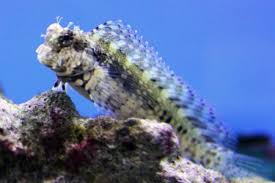Dragons and Their Connection to Rivers and Seas in China
Dragons have been an integral part of Chinese mythology and culture for thousands of years. Unlike Western dragons, which are often depicted as fire-breathing creatures of destruction, Chinese dragons are benevolent, wise, and associated with water. They are believed to control rivers, lakes, seas, and rainfall, making them symbols of fertility, prosperity, and the balance of nature.
In China, many legends tell of river and sea dragons, revered as guardians, rulers, and divine beings. Throughout history, they have been deeply linked to agriculture, weather patterns, and the fate of human civilizations. This article explores the fascinating relationship between dragons and the rivers, lakes, and seas of China, shedding light on their significance in myths, traditions, and rituals.
1. The Water Dragon: A Supreme Symbol of Nature’s Power
In Chinese mythology, the dragon (lóng, 龙) is primarily a water deity. While dragons can soar through the sky, they are believed to live in rivers, lakes, and oceans, where they regulate water flow and control the climate.
The Four Dragon Kings (龙王, Lóngwáng)
The most famous aquatic dragons in Chinese folklore are the Four Dragon Kings, each ruling a major sea in the four cardinal directions:
- The Azure Dragon of the East (青龙, Qīnglóng) – Governs the East China Sea.
- The Red Dragon of the South (赤龙, Chìlóng) – Controls the South China Sea.
- The White Dragon of the West (白龙, Báilóng) – Watches over the Western regions.
- The Black Dragon of the North (黑龙, Hēilóng) – Commands the cold northern waters.
These dragon kings act as protectors of the waterways and are frequently invoked in prayers and rituals, especially during droughts or floods.
2. Dragons and Rivers: The Lifeblood of Civilization
Since ancient times, Chinese civilization has flourished along the great rivers, which are often depicted as living embodiments of dragons. Many of China’s most important waterways are linked to dragon legends and beliefs.
The Yellow River: The Cradle of Chinese Dragons
The Yellow River (黄河, Huáng Hé) is often referred to as the “Dragon’s Vein” of China. Ancient Chinese believed that the river’s winding path resembled a coiling dragon and that its unpredictable floods were caused by the will of the river dragon.
One of the most famous myths associated with the Yellow River is that of Yu the Great (大禹, Dà Yǔ), who tamed the great floods with the help of a golden dragon. This dragon guided him in digging canals and redirecting floodwaters, a legendary feat that established the Xia Dynasty (c. 2070–1600 BCE).
The Yangtze River: Home of the River Dragon
The Yangtze River (长江, Cháng Jiāng), the longest river in China, has long been associated with the Azure Dragon (Qīnglóng), a powerful water deity. Many temples dedicated to river dragons line the Yangtze’s banks, where fishermen and farmers pray for calm waters and abundant harvests.
A famous legend tells of a white dragon that lived in the river and protected the Three Gorges region. This dragon is said to have transformed into a human scholar, teaching villagers how to cultivate rice and build protective dikes.
The Pearl River and the Sleeping Dragon
In southern China, the Pearl River (珠江, Zhū Jiāng) is believed to be a sleeping dragon. Legends say that its bends and curves mark the body of a dragon resting beneath the land. This belief has influenced Feng Shui practices, where the “dragon’s pulse” (龙脉, lóng mài) is considered vital for prosperity.
3. Dragons and the Seas: Protectors and Rulers of the Ocean
Chinese mythology describes the seas as vast realms of dragons, where immortal beings and underwater palaces exist. These mythical oceans are ruled by the Dragon Kings, who command tides, storms, and marine life.
The Palace of the Dragon King
Deep beneath the waves lies the legendary Palace of the Dragon King (龙宫, Lóng Gōng). This magnificent underwater realm, located in the East China Sea, is said to be filled with coral towers, golden gates, and pearls that glow like the moon.
According to legend, the Dragon King of the East Sea (东海龙王, Dōnghǎi Lóngwáng) controls the monsoons and typhoons that impact coastal China. Fishermen and sailors often offer sacrifices to him before venturing out to sea, praying for safe passage and plentiful catches.
The Legend of the Black Dragon and the Bohai Sea
In northern China, the Bohai Sea (渤海, Bó Hǎi) is said to be home to a mighty black dragon. Stories tell of how this dragon once battled a celestial warrior, causing massive waves and earthquakes. Eventually, the dragon was subdued and ordered to guard the seabed, ensuring balance between land and water.
To this day, many coastal communities hold ceremonies to honor sea dragons, believing that they provide protection from tsunamis and hurricanes.
4. Dragon Boat Festivals: Honoring the River Dragons
One of the most famous dragon-related traditions in China is the Dragon Boat Festival (端午节, Duānwǔ Jié), which takes place on the 5th day of the 5th lunar month. This festival commemorates the poet Qu Yuan (屈原), but it also has deep connections to river dragons.
The Origins of Dragon Boat Racing
The dragon boat races originated as a ritual to appease the river dragons, ensuring good weather and bountiful harvests. The long, dragon-shaped boats are believed to represent the spirit of the river, and the rhythmic beating of drums mimics the heartbeat of a sleeping dragon beneath the water.
Offerings to the Water Dragons
During the festival, people throw rice dumplings (粽子, zòngzi) into the river, a practice that originally fed the river dragons to keep them from causing floods. Even today, many riverside communities continue this custom, blending ancient dragon worship with modern cultural celebrations.
5. The Role of Dragons in Water-Related Feng Shui
In Chinese Feng Shui, rivers and seas are considered the veins of the earth, and their energy is often linked to dragons. The concept of “Dragon Veins” (龙脉, lóng mài) refers to the belief that mountains and rivers channel the flow of cosmic energy (气, qì).
Water Dragons and Wealth
In Feng Shui, a house or city located near a “water dragon” (a winding river or a sea current) is believed to be blessed with wealth and prosperity. Many major cities in China, including Beijing, Shanghai, and Guangzhou, were designed with dragon-shaped waterways to enhance their prosperity.
Dragon Temples on Riversides
Numerous temples dedicated to water dragons can be found along China’s major rivers and coastlines. These temples serve as places where locals pray for rain, protection from floods, and successful fishing seasons.
Conclusion
From the mighty rivers that carve through China’s landscape to the vast seas that border its shores, dragons have always been revered as the masters of water. They are not just mythical creatures but symbols of balance, protection, and the cycle of life.
Through centuries of rituals, legends, and traditions, the connection between dragons, rivers, and seas continues to shape China’s cultural identity. Even in modern times, festivals, Feng Shui beliefs, and historical myths remind people of the powerful role that these majestic water dragons play in Chinese history and spiritual life.


